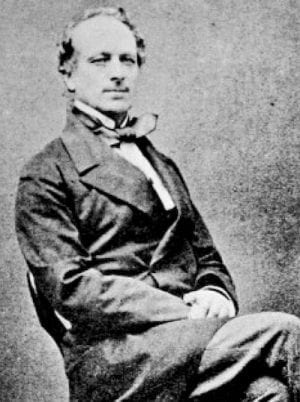Francis Rynd

Francis Rynd (1801-1861) was an Irish physician.
Arguably the inventor of the hypodermic needle, performing and recording the results of the first hypodermic injection on June 3rd 1844. However, the invention is more commonly attributed to Alexander Wood in 1853.
In Rynd’s design, a morphine solution flowed under gravity through the skin breaching trochar, acting as a sedative to treat neuralgia. The 1853 invention used a plunger syringe, allowing doctors to inject solutions faster, and to give intravenous injections.
Biography
- Born 1801 Dublin, Ireland
- 1817 – Educated at Trinity College, Dublin
- 1818 – Apprentice to Sir Philip Crampton in Meath Hospital
- 1830 – MRCS member of the Royal College of Surgeons
- 1836 – Medical superintendent of the Mountjoy Prison
- 1836-1861 Surgeon at the Meath Hospital in Dublin where he worked alongside Robert James Graves and William Stokes
- 1844 – Rynd administered a hypodermic injection on the 3rd of June to treat a case of trigeminal neuralgia. Published ‘Neuralgia – introduction of fluid to the nerve’ in the March 1845 issue of the Dublin Medical Press. However, he failed to include a description of the instrument used.
- Died 1861
Francis Rynd was a perfect gentleman, and had very polished manners; he mixed in the best society, had most of the nobility in Ireland among his patients, dressed most fashionably, and was a great favourite with the ladies.
Ormsby LH, 1888 on Francis Rynd
Hypodermic needle (1844)
Rynd used a cannula and trocar. An incision is made by a lancet and the trocar inserted into the skin. The thin hollow tube, opened at both ends, is fitted over the top of the trocar. Once the cannula was inserted, the trocar was retracted and the medications or fluids placed into the cannula. Produced by John Weiss, surgical instrument maker.
On the 3rd of June a solution of fifteen grains of acetate of morphia, dissolved in one drachm of creosote, was introduced to the supra-orbital nerve, and along the course of the temporal,
Rynd F. Neuralgia – introduction of fluid to the nerve. Dublin Med Press 1845; 13: 167–168
malar, and buccal nerves, by four punctures of an instrument made for the purpose. In the space of a minute all pain (except that caused by the operation, which was very slight) had
ceased, and she slept better that night than she had for months.
Rynd’s description of the use of his syringe for the first time;

Nothing did me any good but a curious little new-fangled operation of putting opium under the skin, which relieved one for 24 hours
Florence Nightingale
Although Francis Rynd developed the first syringe with a hollow needle, he did not publicise until 1861 after Alexander Wood claimed to have invented the hypodermic syringe (1855)
The subcutaneous introduction of fluids, for the relief of neuralgia, was first practised in this country by me, in the Meath Hospital, in the month of May, 1844. The cases were published in the “Dublin Medical Press” of March 12, 1845. Since then, I have treated very many cases, and used many kinds of fluids and solutions, with variable success
Rynd, 1861

The canula* (a) screws on the instrument at (b); and when the button (c), which is connected to the needle (f), and acted on by a spring, is pushed up (as in Fig 2), the small catch (d) retains it in its place. The point of” the needle then projects a little beyond the canula (Fig. 2). The fluid to be applied is now to be introduced into the canula through the hole (e), either from a common writing-pen or the spoon-shaped extremity of a silver director
Major Publications
- Rynd F. Neuralgia – introduction of fluid to the nerve. Dublin Med Press 1845; 13: 167–168
- Rynd F. Pathological and practical observations on strictures, and some other diseases of the urinary organs. London. 1849.
- Rynd F. Description of an Instrument for the Subcutaneous Introduction of Fluids in Affections of the Nerves. Dublin Quarterly Journal of Medical Science. 1861; 32: 13
References
Biography
- Obituary: Francis Rynd. Dublin Quarterly Journal of Medical Science. 1862; 33: 254.
- Ormsby LH. Francis Rynd. Medical history of the Meath Hospital and County Dublin Infirmary, 1888: 206-209
- Obituary: Francis Rynd (1801-1861). JAMA. 1970; 212(7): 1208.
- Bibliography. Rynd, Francis 1801-1861. WorldCat Identities
Eponymous terms
- The Irish doctor who invented the syringe. Irish Times. Dec 5, 2002
- Rynd-type hypodermic syringe, London, England, 1860-1880. Science Museum Group
[cite]
Studied at the University of Edinburgh MBChB BSc. British doctor currently working in Emergency Medicine in Perth, Western Australia. Interests in Anaesthetics, Critical Care and trail running.

